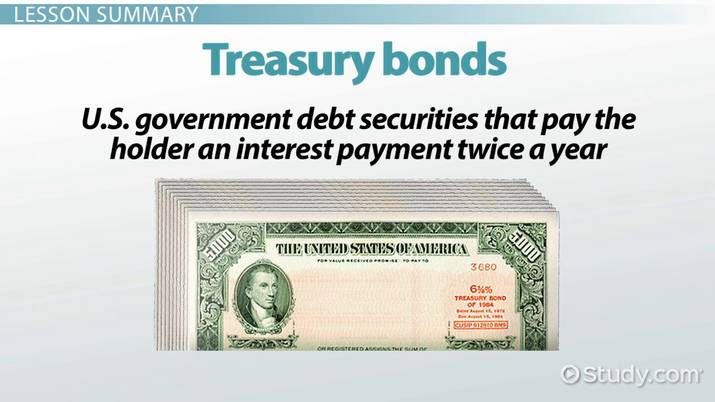
You may need to modify your bank account if you have trouble logging into your TreasuryDirect account. This will require your routing number which is a nine digit number. This number can also be found in an email from TreasuryDirect. After you have this number, you can log in your account to use the services.
Trouble logging in to Treasurydirect
If you have trouble logging in to TreasuryDirect, there are a few things you can try. First, ensure that your computer is registered for TreasuryDirect. You will need an OTP in order to log in if your computer is not registered. Once you have entered your account number, click "Submit", an OTP will be generated. After entering the code, you will be asked to enter it into the appropriate section of the website.
Next, verify your bank account details. When signing up to TreasuryDirect, TreasuryDirect users often submit their bank information. These details may change and users will need to submit additional paperwork. This paperwork, known as the "Sign Garantied Seal," is used to protect identity fraud. Link your TreasuryDirect account to another account you are planning to keep open for long periods of time.

Transferring bank accounts
The TreasuryDirect login service allows you to change your bank's online account features if you aren't satisfied. It offers many convenient features such as a variety languages and a paper-based form. You have two options to update your account: you can either change the primary account or designate a new one by email or calling. Follow these steps to update your account information.
First, pick a password. You must choose a password that is unique. Don't forget to include your personal information. After choosing a password, you'll need to answer three security question.
Set up an Account
In just a few steps, you can create a TreasuryDirect account. First, you'll need to choose a password and security questions. It is important that your password be unique. If you're worried that someone might find your password, you can put a hold on it. These holds block other users' access to your account.
Next, choose a password of at least 8 characters. Although you can mix numbers and letters, you should not use "#". special characters. A simple, easy-to-remember choice is also important. You could, for example, use a caption or image as a memory aid. You will also need to decide how much money you wish to spend per calendar.

Redeem a savings Bond
TreasuryDirect makes it easy to redeem savings bonds online. There are however a few things you should know before you can. First, you need to register your bond, which is done on your bond. This will establish who will get the interest and who can cash it. Additionally, registering your savings bond ensures that the savings bond will be paid out in the event that the owner dies. You can register your savings card in one of three ways.
The process is simple. First, you need to make sure you have a valid account number. Log in to TreasuryDirect. You can also verify identity by using your password and email address. This will ensure that your account is protected from identity theft.
FAQ
What is security in the stock exchange?
Security is an asset that produces income for its owner. Most common security type is shares in companies.
Different types of securities can be issued by a company, including bonds, preferred stock, and common stock.
The earnings per share (EPS), and the dividends paid by the company determine the value of a share.
You own a part of the company when you purchase a share. This gives you a claim on future profits. If the company pays a dividend, you receive money from the company.
You can always sell your shares.
What is an REIT?
An REIT (real estate investment trust) is an entity that has income-producing properties, such as apartments, shopping centers, office building, hotels, and industrial parks. These are publicly traded companies that pay dividends instead of corporate taxes to shareholders.
They are similar companies, but they own only property and do not manufacture goods.
What is a Stock Exchange and How Does It Work?
A stock exchange is where companies go to sell shares of their company. This allows investors to buy into the company. The market determines the price of a share. It is usually based on how much people are willing to pay for the company.
Companies can also raise capital from investors through the stock exchange. Investors give money to help companies grow. This is done by purchasing shares in the company. Companies use their money as capital to expand and fund their businesses.
There can be many types of shares on a stock market. Some shares are known as ordinary shares. These are most common types of shares. Ordinary shares are bought and sold in the open market. Stocks can be traded at prices that are determined according to supply and demand.
Preferred shares and bonds are two types of shares. Priority is given to preferred shares over other shares when dividends have been paid. Debt securities are bonds issued by the company which must be repaid.
Statistics
- Ratchet down that 10% if you don't yet have a healthy emergency fund and 10% to 15% of your income funneled into a retirement savings account. (nerdwallet.com)
- US resident who opens a new IBKR Pro individual or joint account receives a 0.25% rate reduction on margin loans. (nerdwallet.com)
- Our focus on Main Street investors reflects the fact that American households own $38 trillion worth of equities, more than 59 percent of the U.S. equity market either directly or indirectly through mutual funds, retirement accounts, and other investments. (sec.gov)
- For instance, an individual or entity that owns 100,000 shares of a company with one million outstanding shares would have a 10% ownership stake. (investopedia.com)
External Links
How To
How to open a trading account
It is important to open a brokerage accounts. There are many brokers that provide different services. Some brokers charge fees while some do not. Etrade, TD Ameritrade and Schwab are the most popular brokerages. Scottrade, Interactive Brokers, and Fidelity are also very popular.
Once you've opened your account, you need to decide which type of account you want to open. You should choose one of these options:
-
Individual Retirement Accounts, IRAs
-
Roth Individual Retirement Accounts (RIRAs)
-
401(k)s
-
403(b)s
-
SIMPLE IRAs
-
SEP IRAs
-
SIMPLE 401(k).
Each option has different benefits. IRA accounts offer tax advantages, but they require more paperwork than the other options. Roth IRAs allow investors to deduct contributions from their taxable income but cannot be used as a source of funds for withdrawals. SIMPLE IRAs are similar to SEP IRAs except that they can be funded with matching funds from employers. SIMPLE IRAs are simple to set-up and very easy to use. They allow employees to contribute pre-tax dollars and receive matching contributions from employers.
Finally, you need to determine how much money you want to invest. This is the initial deposit. Most brokers will offer you a range deposit options based on your return expectations. You might receive $5,000-$10,000 depending upon your return rate. The lower end of the range represents a prudent approach, while those at the top represent a more risky approach.
You must decide what type of account to open. Next, you must decide how much money you wish to invest. There are minimum investment amounts for each broker. These minimum amounts vary from broker-to-broker, so be sure to verify with each broker.
You must decide what type of account you want and how much you want to invest. Next, you need to select a broker. Before choosing a broker, you should consider these factors:
-
Fees – Make sure the fee structure is clear and affordable. Many brokers will offer rebates or free trades as a way to hide their fees. However, some brokers actually increase their fees after you make your first trade. Be wary of any broker who tries to trick you into paying extra fees.
-
Customer service - Find customer service representatives who have a good knowledge of their products and are able to quickly answer any questions.
-
Security – Choose a broker offering security features like multisignature technology and 2-factor authentication.
-
Mobile apps: Check to see whether the broker offers mobile applications that allow you access your portfolio via your smartphone.
-
Social media presence - Find out if the broker has an active social media presence. If they don’t have one, it could be time to move.
-
Technology – Does the broker use cutting edge technology? Is the trading platform intuitive? Are there any glitches when using the system?
After you have chosen a broker, sign up for an account. Some brokers offer free trials while others require you to pay a fee. After signing up you will need confirmation of your email address. Next, you'll have to give personal information such your name, date and social security numbers. You will then need to prove your identity.
After your verification, you will receive emails from the new brokerage firm. These emails will contain important information about the account. It is crucial that you read them carefully. This will include information such as which assets can be bought and sold, what types of transactions are available and the associated fees. Be sure to keep track any special promotions that your broker sends. These could include referral bonuses, contests, or even free trades!
Next, open an online account. An online account can be opened through TradeStation or Interactive Brokers. Both of these websites are great for beginners. When you open an account, you will usually need to provide your full address, telephone number, email address, as well as other information. After all this information is submitted, an activation code will be sent to you. This code is used to log into your account and complete this process.
Now that you've opened an account, you can start investing!